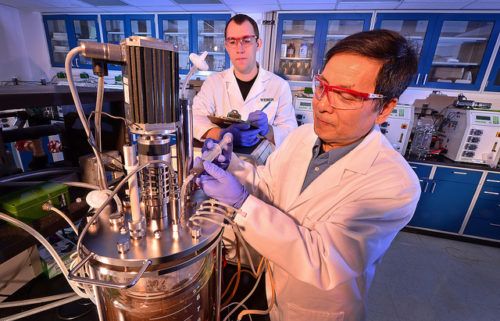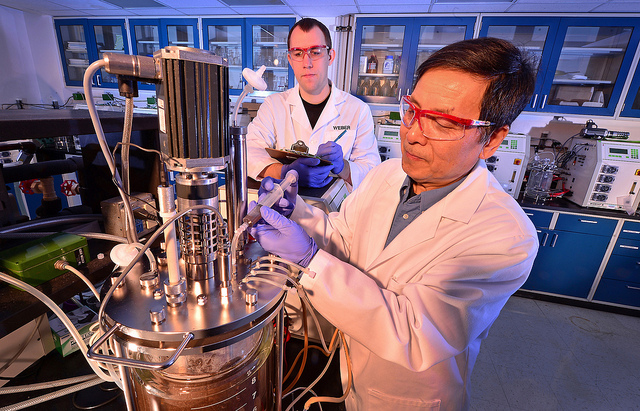
by Almuth Ernsting (ECO Volume 52, Issue 2)
The vast majority of current synthetic biology applications involve microorganisms, including bacteria, fungi (e.g. yeast) and microalgae. Nearly all uses of genetically engineered (GE) microorganisms are classed as ‘contained’, a
term which, under different countries’ and regions’ regulations covers all uses inside industrial facilities, such as biofuel refineries, as well as manufacturing plants. GE microorganisms are being used, for example, to produce algal oils included in cosmetics, to ferment sugars to ethanol, or to make products like farnesene, which can be used in pharmaceuticals, tyres or biofuels.
Almost invariably, the GE microbes used in industrial production have been classified as being of ‘negligible’ or ‘low risk’ largely based on the developer’s own risk assessment and on the fact that the natural organism which has been genetically engineered, as well as any organisms from which genes have been transferred, are not pathogenic. This means that the measures required to try and contain them are very basic. In the US, GE microorganisms used commercially are generally excluded from the requirement of a detailed risk assessment, although food or animal feed products made with such microbes may require a limited public health assessment.
Even with conventional genetic engineering, it is highly problematic to base risk assessments solely on risks associated with natural organisms which have been genetically engineered or from which genes have been transferred. Gene transfers very commonly result in unintended mutations and in gene expressions which can translate into unintended traits. In the case of synthetic biology, such an approach is most obviously negligent. For example, biofuel
company Mascoma has genetically engineered baker’s yeast so that it can split starch molecules into sugars and then ferment them with a higher yield than ordinary yeast provides. This yeast has been widely used in corn ethanol refineries, run by companies with no background biotechnology and biosafety measures. Another company, Algenol, has been growing cyanobacteria (“blue-green algae”) which have been genetically engineered to directly ferment carbon dioxide into ethanol in plastic tubes.
Nothing other than thin sheets of plastic separate these microbes from the open environment, and the tubes need to be regularly flushed. The environmental risks posed by such GE organisms cannot possibly be judged by looking at
the properties of ordinary bakers’ yeast (which cannot split starch) or of ordinary cyanobacteria, which play a major role in the earth’s carbon cycle and in marine nutrient cycles.
In both of these cases, physical containment measures are minimal, biological containment has not even been attempted, and the risk of accidental release of such microbes is obviously high.
COP11 (XI/11) urged parties and other governments to apply the precautionary approach organisms and products derived from synthetic biology. Previously, COP 10 (X/37) decided to apply the precautionary approach to the use of GMOs in biofuel production. ‘Contained use’ regulations effectively exempt the vast majority of organisms that have been genetically engineered through synthetic biology methods and that are, or are likely to be used commercially, from meaningful regulation. This is entirely incompatible with the precautionary approach and with previous CBD decisions.
